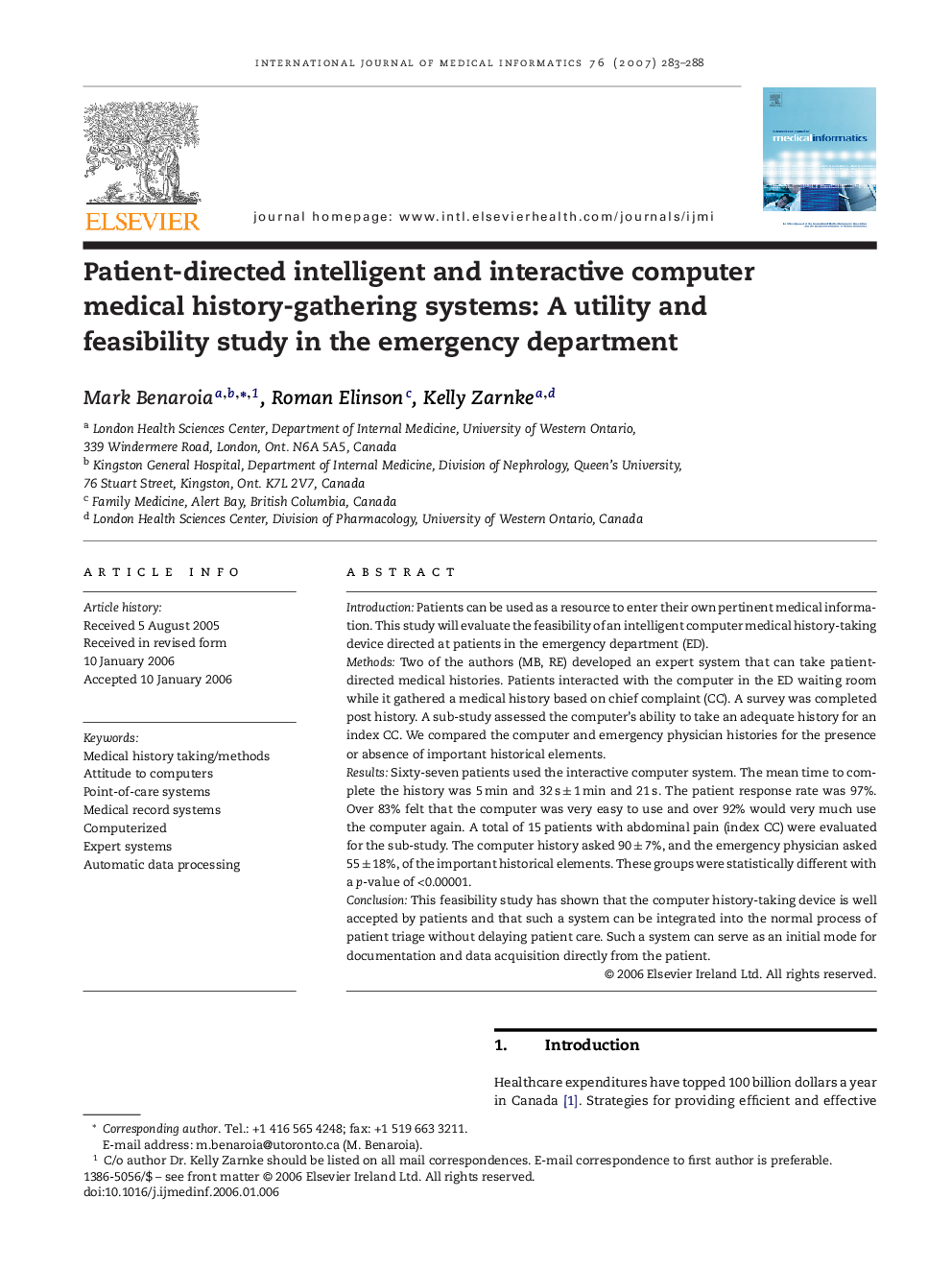| Article ID | Journal | Published Year | Pages | File Type |
|---|---|---|---|---|
| 517284 | International Journal of Medical Informatics | 2007 | 6 Pages |
IntroductionPatients can be used as a resource to enter their own pertinent medical information. This study will evaluate the feasibility of an intelligent computer medical history-taking device directed at patients in the emergency department (ED).MethodsTwo of the authors (MB, RE) developed an expert system that can take patient-directed medical histories. Patients interacted with the computer in the ED waiting room while it gathered a medical history based on chief complaint (CC). A survey was completed post history. A sub-study assessed the computer's ability to take an adequate history for an index CC. We compared the computer and emergency physician histories for the presence or absence of important historical elements.ResultsSixty-seven patients used the interactive computer system. The mean time to complete the history was 5 min and 32 s ± 1 min and 21 s. The patient response rate was 97%. Over 83% felt that the computer was very easy to use and over 92% would very much use the computer again. A total of 15 patients with abdominal pain (index CC) were evaluated for the sub-study. The computer history asked 90 ± 7%, and the emergency physician asked 55 ± 18%, of the important historical elements. These groups were statistically different with a p-value of <0.00001.ConclusionThis feasibility study has shown that the computer history-taking device is well accepted by patients and that such a system can be integrated into the normal process of patient triage without delaying patient care. Such a system can serve as an initial mode for documentation and data acquisition directly from the patient.
